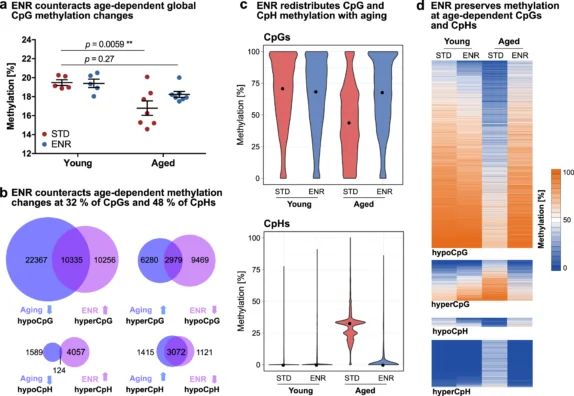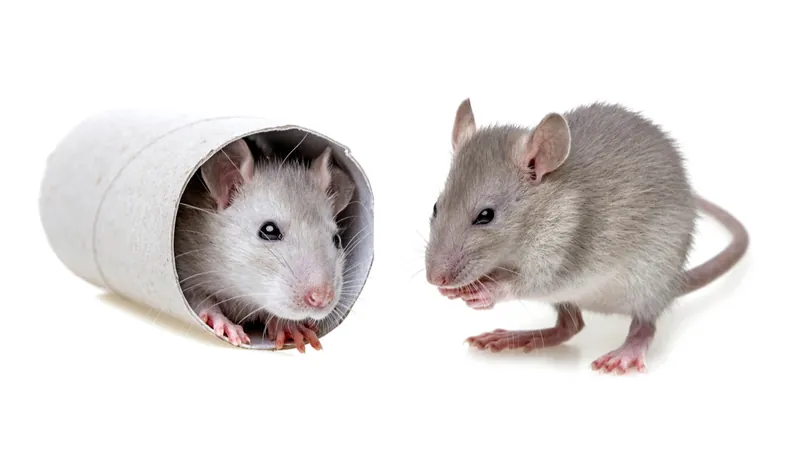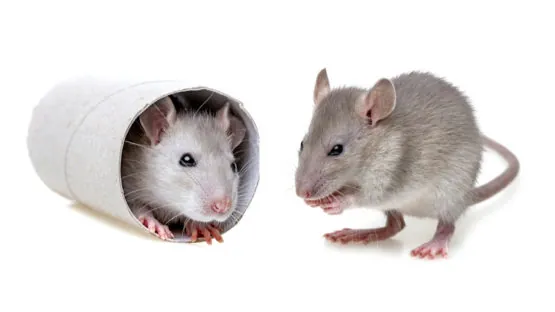A study published in Nature Communications has shown that an environment rich in stimuli changes the epigenetics of the mouse hippocampus, making the brains of aged mice more like those of young mice [1].
What is an enriched environment?
For mice, enriched environments (ENRs) are “large cages equipped with frequently rearranged toys, providing physical, cognitive, sensory, and social stimulation”. In this experiment, the researchers took an enclosure roughly 3/4 of a square meter in size and filled it with tunnels and plastic toys. Ten mice were placed into this enclosure. The control group was put into standard polycarbonate cages, five mice per cage. Food and water were provided ad libitum to both groups, and there was no difference in the food quality.
The researchers cite many previous studies showing the positive effects of environmental enrichment, including but not limited to neurogenesis in the hippocampus [2], behavioral and cognitive improvements [3], resistance to neurodegenerative diseases [4], and improved learning and brain plasticity [5]. The fact that mental stimulation is good for the brains of mammals is backed by substantial amounts of research.
While previous studies have examined the effects of ENRs on methylation [6], this study is the first to examine the relationship between age-related epigenetic alterations and epigenetic alterations caused by an enriched environment.
The relationship between environment and aging
To begin, the researchers first examined the effects of ENRs on the epigenetics of cells in the dentate gyrus, a part of the brain next to the hippocampus that is responsible for forming memories. Compared to the control mice, ENR-exposed mice had altered gene expression related to synaptic plasticity, synaptic organization, axon guidance, receptor use, signaling, and metabolism. The critical neuronal protein Npas4 was upregulated as well.
The researchers compared the methylation of both young and aged mice in both control groups. The results were striking. Overall methylation is drastically decreased with aging in these cells, but ENR mitigated much of this. Approximately 40% of the specific methylation sites affected by aging were countered by ENR. In multiple visualizations, young control group mice, young ENR mice, and older ENR mice look similar in their methylation profiles; the aged control group clearly stands out.

The researchers conducted further testing on aged mice, and they showed that late-life ENR provides similar benefits to lifelong ENR after three months. 17-month-old mice were expressing multiple genes critical to neurogenesis in the same way as their three-month-old counterparts; the control group was expressing these genes little if at all.
Finally, the researchers studied how many of the affected genes were found in human beings, and they found that there was a significant overlap between the genes positively affected by ENR in mice and the genes that decline in expression alongside human cognitive decline, including Alzheimer’s disease.
Abstract
The decline of brain function during aging is associated with epigenetic changes, including DNA methylation. Lifestyle interventions can improve brain function during aging, but their influence on age-related epigenetic changes is unknown. Using genome-wide DNA methylation sequencing, we here show that experiencing a stimulus-rich environment counteracts age-related DNA methylation changes in the hippocampal dentate gyrus of mice. Specifically, environmental enrichment prevented the aging-induced CpG hypomethylation at target sites of the methyl-CpG-binding protein Mecp2, which is critical to neuronal function. The genes at which environmental enrichment counteracted aging effects have described roles in neuronal plasticity, neuronal cell communication and adult hippocampal neurogenesis and are dysregulated with age-related cognitive decline in the human brain. Our results highlight the stimulating effects of environmental enrichment on hippocampal plasticity at the level of DNA methylation and give molecular insights into the specific aspects of brain aging that can be counteracted by lifestyle interventions.
Conclusion
This research makes it extremely clear that lifestyle interventions relating to the brain have identifiable biological effects. Mental stimulation and a changing environment, at least in mice, is shown to drastically improve not only mental abilities but the fundamental gene expression that makes these abilities possible, and it has been shown to have positive effects on the human brain as well [7].
Further studies may allow us to identify the exact sorts of stimulation that promote neurogenesis in humans and the genes that they affect. It may be possible to one day develop a treatment that stimulates expression of these genes, boosting human intelligence and directly counteracting epigenetic age-related cognitive decline.
Literature
[1] Zocher, S., Overall, R. W., Lesche, M., Dahl, A., & Kempermann, G. (2021). Environmental enrichment preserves a young DNA methylation landscape in the aged mouse hippocampus. Nature Communications,12(1), 1-15.
[2] Kempermann, G., Kuhn, H. G., & Gage, F. H. (1997). More hippocampal neurons in adult mice living in an enriched environment. Nature, 386(6624), 493-495.
[3] Sampedro-Piquero, P., & Begega, A. (2017). Environmental enrichment as a positive behavioral intervention across the lifespan. Current neuropharmacology, 15(4), 459-470.
[4] Fischer, A. (2016). Environmental enrichment as a method to improve cognitive function. What can we learn from animal models?. Neuroimage, 131, 42-47.
[5] Speisman, R. B., Kumar, A., Rani, A., Pastoriza, J. M., Severance, J. E., Foster, T. C., & Ormerod, B. K. (2013). Environmental enrichment restores neurogenesis and rapid acquisition in aged rats. Neurobiology of aging, 34(1), 263-274.
[6] Zhang, T. Y., Keown, C. L., Wen, X., Li, J., Vousden, D. A., Anacker, C., … & Meaney, M. J. (2018). Environmental enrichment increases transcriptional and epigenetic differentiation between mouse dorsal and ventral dentate gyrus. Nature communications, 9(1), 1-11.
[7] Hertzog, C., Kramer, A. F., Wilson, R. S., & Lindenberger, U. (2008). Enrichment effects on adult cognitive development: can the functional capacity of older adults be preserved and enhanced?. Psychological science in the public interest, 9(1), 1-65.




